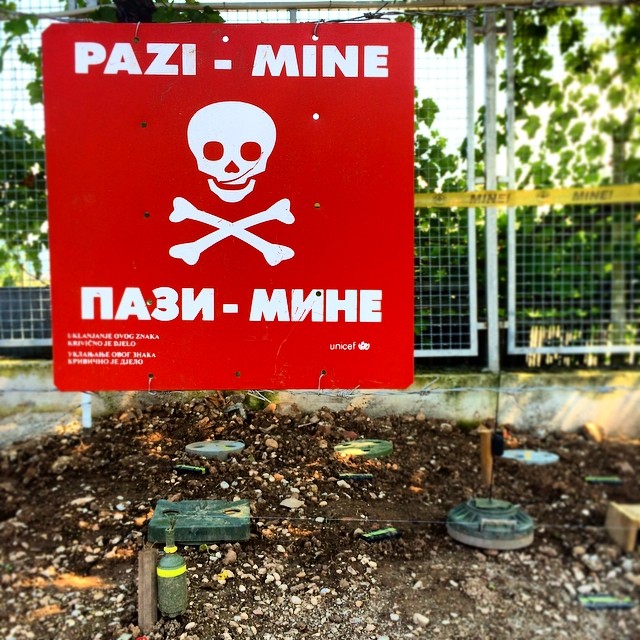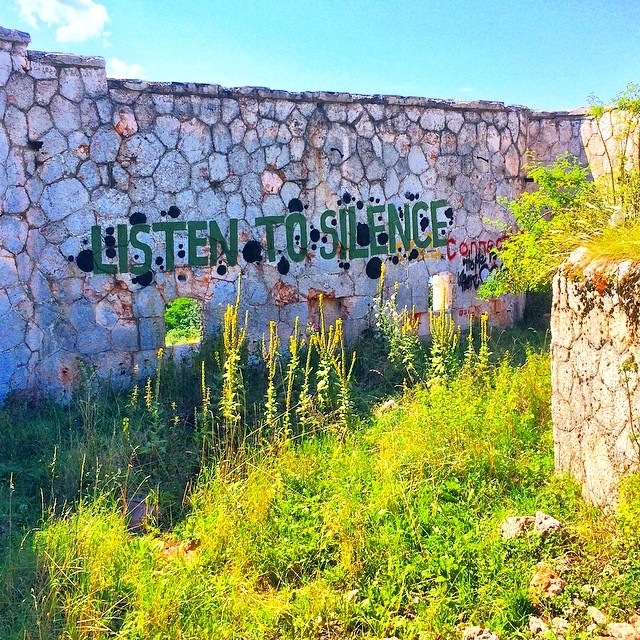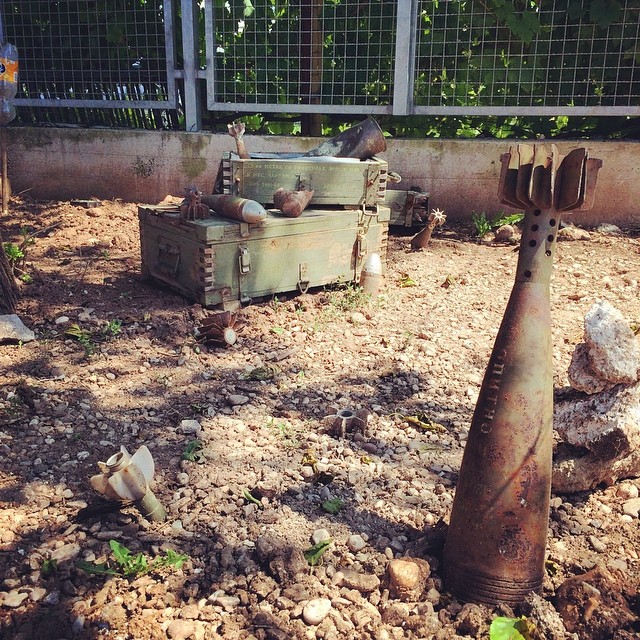i don’t know about anyone else, but i had this picture of Sarajevo as just emerging from the Siege, still weary and war-torn, even though it’s been almost two decades since the fighting ended. NOPE.
while yes, there was indeed a lot of damage done during the nearly four years of the Siege — and lots of loss of life — you wouldn’t know it at first glance. there’s a very vibrant city, a lovely old town, and amazing forests and views from the hillside. the country also has the famous town of Mostar and others, as well as and lots of unspoiled ecotourism opportunities (rafting seems to be a very popular choice).
it’s come a long way since the U2 & Pavarotti song:
or this Cranberries one:
yes, there was war
it’s still very, very sobering, though, when you go to or pass by places in Sarajevo that were pivotal during the Siege, like the marketplace where there was a massacre, the Parliament Building, or the Holiday Inn (the only operating hotel during the war, where journalists stayed). almost all buildings in the city suffered damage and over 35,000 buildings were completely destroyed; almost 14,000 people were killed. both tour guides i had today lived through the Siege as children. i should note that the city has largely been rebuilt; if you didn’t know it, you might think there were just a couple abandoned buildings.
but that besieged image still lingers.

From an exhibition at the Sarajevo Tunnel. As an aside, I heard they expect mine clearing in the countryside to be done by 2022.
indeed, the recent war plays a large part of the identity of the people and the city, and is worth delving into to learn more about, but that doesn’t completely define it, or the country.

I love this. On an abandoned building outside of town. Can you imagine how amazing silence is after almost four years of shelling, sniping, and death?
but there’s so much more, but also so much holding the country back
and it’s not safety. the war is over; it’s safe to travel here. it’s internal problems.
i was talking to my afternoon tour guide (that’s the bonus of being a solo traveler, you get to sit up front in the van — with the air conditioning, too!) about how neighbor — and fellow ex-Yugoslavian — Croatia has done such an amazing job promoting itself for tourism. i mean, you mention Croatia and people immediately wax glorious about the coast and Dubrovnik and Split. why can’t Bosnia and Herzegovina do the same for itself? and i was thinking, why isn’t Sarajevo one of those places where Europeans go for stag parties and such? (there’s a lot of nightlife in Sarajevo, but it doesn’t seem like it’s the rowdy drunk Eurotrash [and i mean that in the most fond way possible] type?)

View of Sarajevo from an abandoned restaurant and cable car station [unfortunately nothing left of the latter] in the hills
no, there’s no major coastline to speak of, but there are several factors hindering spectacular tourism growth, he said:
- the national tourism board is corrupt (like many government organizations here)
- Croatia, as a member of the EU, has guidelines and funding. while BiH is slowly making its way towards membership, he said many of those in power now don’t want it to happen because it will expose and make them accountable for their corruption.
- the country is broken up into two entities (no, not Bosnia + Herzegovina, but 1) Federation of Bosnia and Herzegovina and 2) Republika Srpska), and they aren’t particularly friendly with each other. created during the peace process, they’re whatever the opposite of kissing cousins is.
- he went to ITB in Berlin (a large tourism trade fair) and the Bosnia and Herzegovina booth had two separate tables, one for the Federation and one for the Republic. one country, practically separate booths. not helpful. to make matters worse, many people think the Republika Srpska is Serbia, which is very much not (perhaps to their dismay?).
- because of all this, pretty much all external promotion is done at the lowest level, by the service providers themselves. the best he can do for now is provide an excellent product and hope for word-of-mouth advertising.
- i learned this morning (on a different tour) that there is 45% unemployment (up to 65% in younger people) in the country, yet the afternoon guide said he thinks it’s possible that the economy of the country could largely be hung on tourism — it just needs a catalyst to get the name out there.
as a visitor, it’s not as convenient as Croatia because it’s not part of the EU, so there’s no cheap mobile roaming (important for me!). also, you may have to deal with two currencies, the euro (which i paid for tours and hotel with, though it’s not a requirement), and the KM (convertible mark), which you use for everyday expenses. still, not really a big deal since the KM is pegged to the Euro at just about 2:1 so it’s easy to convert and my ATM card works fine here, and i expect my credit card to as well (i haven’t had a chance to use it yet; many places are still cash-only).
in any case, tourist numbers are growing 10-15% year over year, so that’s a good sign (as is, personally speaking, seeing some Asian tourists — say what you will, they bring in moolah).
i’m having a great time so far and can only expect better in the years to come and personally can’t wait to come back. (not to do their tourism board any favors, but COME! you’ll be pleasantly surprised — i was.)






Be the first to comment on "Bosnia and Herzegovina’s Image Problem"